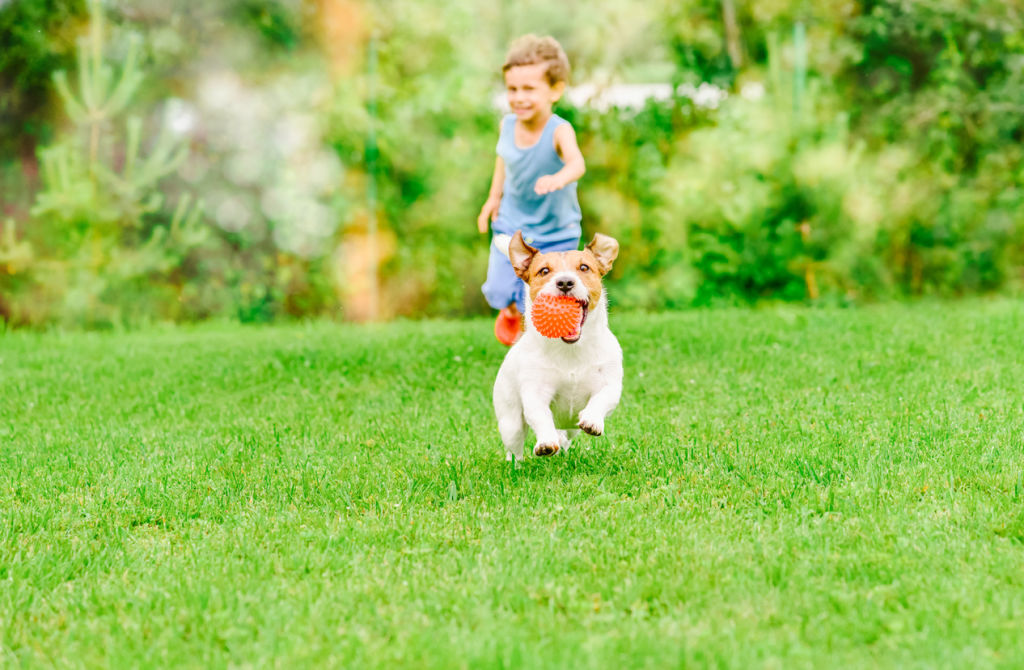Home buyers preference ‘pet-friendly’ over living close to family and friends

When it comes to making a property appealing, we might be overlooking an essential member of the family.
A new Suncorp study revealed over half of Australians consider their pets more important than proximity to family and friends when buying a home.
The Brisbane bank and insurance company asked 1600 participants (1000 home owners and 600 non-home owners) to rate lifestyle features of a home, including location and size.
It found 51 per cent cited pet-friendliness of the utmost importance, compared to living near family (46 per cent), and friends (39 per cent).

With childless couples, delaying children and living alone all on the rise, more Australians live with a cat or dog than a child, according to Roy Morgan research.
Pet industry figures show 62 per cent of Australian households have a resident pet. Of those without one, 59 per cent want a pet in the near future. Dogs are the most common fur baby (38 per cent of households), followed by cats (29 per cent).
Creative advertising director Wendy Mace, 55, said the needs of her two pet pooches were paramount when house hunting.
“They are there more than I am. I wanted to make sure it was an environment fully suitable for them. I come from the country and I do feel it’s better for an animal to have some dirt, or grass, something to dig around in, and be able to toilet at their own home.”
In order to buy into the area of her choice and cater to the needs of her dogs, Mace purchased a ground floor flat with a garden in the pet-friendly Fortis Development Groups’ recently completed Wattletree Malvern estate, in Melbourne.

“This property is different in that the developers have openly encouraged pet owners to invest,” she says.
“A lot of people, particularly those renting, are trying to keep animals a secret. We don’t want to keep our pets our dirty little secret. We want to be proud pet owners, not hiding them.
“The people living here are mostly older people who are downsizing. We’ve all had children and now we have pets that partly compensate for our lack of needing to nurture children any more. They keep us company.”
Mace has two grown-up sons in outer Melbourne, and parents in the country.
Suncorp executive general manager lending Glenn Haslam says pet-friendliness was only one key element driving housing decisions. “According to the Home Index, the most important factor when buying a home was how the prospective home looks on the inside,” he says.

“It can be difficult to find a home that ticks all of the boxes, so buyers need to make sacrifices and prioritise what’s most important to keep within the budget – this can sometimes mean living further away from family and friends. Our research tells us that more people are spending money on socialising and eating outside the home.”
Whatever your view, pets have enormous consumer pulling power.
A 2017 Choosi study found Aussies spend $7.3 billion a year more on pets than on tech purchases, and $6.4 billion more a year on them than fashion items.
While this might be deemed yet another indictment of human social relationships gone down the drain, it’s not that simple. Perhaps we’re wired for furry companions. Numerous studies confirm having a pet is good for our wellbeing – a fact building planners and authorities are yet to catch up with.

Laws about pets vary from state to state. In Victoria and ACT, progressive new tenancy laws will make it harder for landlords to refuse consent for a pet. But in other states tenants still generally have to gain permission from their landlord to keep pets other than assistance animals.
The most common reason for surrendering a cat was not being able to take them into accommodation, according to a retrospective study of RSPCA admissions published in 2016.
We recommend
We thought you might like
States
Capital Cities
Capital Cities - Rentals
Popular Areas
Allhomes
More










